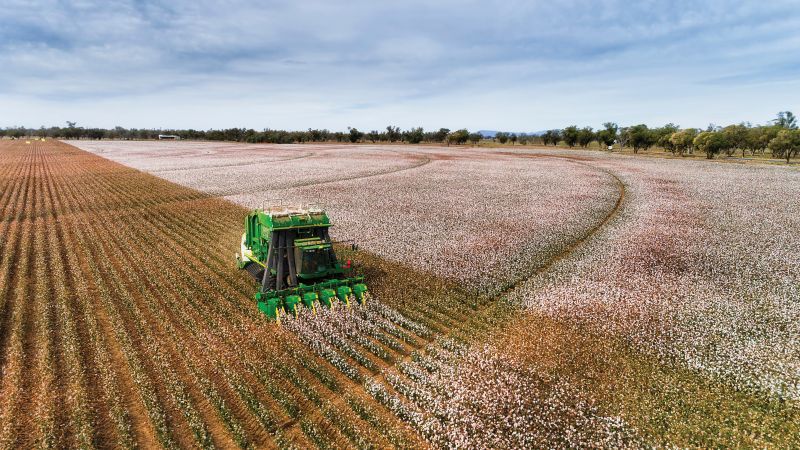2016: The Year in Washington
BY GARY ADAMS
From Cotton Grower Magazine – December 2016
The National Cotton Council’s (NCC) 2016 Washington agenda focused on enhancing existing cotton policy to better address the economic situation, while advancing the industry’s priorities on appropriations, trade and regulatory issues.
In the lead up to 2016 activities, NCC members participated in a House Agriculture Subcommittee hearing focused on the ongoing economic stress in cotton country. The witnesses included current NCC chairman Shane Stephens, four cotton producers (from each of the production regions) and an agricultural lender. This and other activities were focused on the need to add cottonseed as a “covered commodity” in the 2014 farm law, making it eligible for the Agriculture Risk Coverage/Price Loss Coverage policies available to other crops.
This initiative began with convincing USDA to take this action under the authority provided by the farm bill, to designate “other oilseeds.” Despite letters of support to USDA from 120 members of Congress, hundreds of lenders across the Cotton Belt, and numerous other national and regional farm and commodity organizations, USDA ultimately declined to take this action.
This led to NCC efforts to seek a different short-term solution, while continuing activities that can ultimately lead to a cottonseed designation. The short-term answer was a USDA Cotton Ginning Cost Share Program that provided much-needed, timely assistance to all cotton farmers based on their 2015 planted acres. This assistance was delivered by USDA Farm Service Agency offices in near-record time in late summer 2016 and resulted in approximately $330 million in assistance to cotton producers.
While this stop-gap measure provided some relief to the economic pressures in the cotton industry, it does not provide the longer term, stabilizing policy the industry needs. Thus, the NCC continues to seek a legislative opportunity to advance the cottonseed designation prior to the next farm bill’s development.
In addition, the NCC worked closely with Congress at the end of 2015 to reauthorize commodity marketing certificates, so USDA can allow producers and marketers to use certificates when redeeming commodities from the marketing loan program. This provision is critical to decrease administrative burdens for producers, marketers, and USDA and ensure the proper, orderly flow and marketing of commodities, particularly during times of low prices. This provision is currently in place for all marketing loan eligible commodities.
In the area of crop insurance, the NCC is working with USDA’s Risk Management Agency (RMA) to enhance the quality loss provisions in the existing cotton crop insurance policies. As a result of weather-related impacts in areas of the Southeast prior to and during harvest in 2015, and again in 2016, it became evident the current quality loss provision is not equipped to adequately address the loss of value resulting from lower quality lint. The NCC and regional/state grower organizations are working closely with the RMA to seek a modification or enhancement to current policies that will better address quality losses.
On the trade front, the NCC continues to express concern about the ongoing trade policies of major agricultural producing countries, including China and India. By working closely with the Administration and Congress, the NCC sees an opportunity for these concerns to be addressed as part of the World Trade Organization (WTO) dedicated discussions on cotton policy held biannually.
Another major trade focus in early 2016 was a resolution to the Turkey anti-dumping case against U.S. cotton imports. Thanks to strong Congressional support and close coordination between the U.S. cotton industry and the Administration, a potentially devastating outcome ultimately was mitigated, with Turkey applying a 3% duty across all U.S. cotton imports. While not the preferred outcome, this was much improved from Turkey’s preliminary decision reached earlier in the investigation.
On the appropriations front, the NCC continues to ensure key industry programs and priorities are adequately funded on an annual basis. This includes full funding for the boll weevil and pink bollworm eradication programs and the Market Access Program and Foreign Market Development Program that provide key export market development and promotion funds for Cotton Council International. This year’s Senate Agriculture Appropriations bill also includes a potential increase in funding for the three USDA Agricultural Research Service ginning laboratories.
The NCC also continues to vigorously address regulatory issues that are affecting the U.S. cotton industry. A key focus is with EPA and the registration or re-registration of key crop protection products, so producers continue to have access to the necessary tools to efficiently produce high-quality cotton. A top priority has been working with EPA to get a label for both dicamba and 2,4-D for use over the top of new cotton varieties with these herbicide-tolerant traits. As of this writing, there is significant optimism that both products will be labeled for in-season use with the new traits for the 2017 growing season.
In addition, EPA is adopting a more aggressive stance in reviewing older chemistries, such as organophosphates, which includes a number of key cotton pest control products. As such, the NCC is working with EPA, USDA and Congress to ensure EPA is following the science when reviewing these products rather than adopting a “precautionary principle” approach that could lead to the cancellation of many uses.
Other regulatory concerns include a rewrite of the regulations that govern biotechnology products, the ongoing “waters of the United States” regulation currently on hold due to legal action, and implementation of the new Worker Protection Standards for pesticide applicators.
As 2016 draws to a close and the elections are concluded, the NCC is gearing up for an active year in 2017. This includes an intense educational and outreach effort with the new Congress and Administration, while continuing to pursue a cottonseed policy, preparations for the next farm bill debate, and active participation in the regulatory process to help maintain access to the necessary crop protection tools for producers.
Adams is President and CEO, National Cotton Council of America









